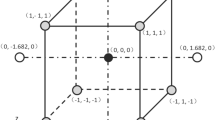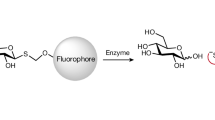Abstract
Chemoheterotrophic marine bacteria of the SAR11 clade are Earth’s most abundant organisms. Following the first cultivation of a SAR11 bacterium, ‘Candidatus Pelagibacter ubique’ strain HTCC1062 (Ca. P. ubique) in 2002, unusual nutritional requirements were identified for reduced sulfur compounds and glycine or serine. These requirements were linked to genome streamlining resulting from selection for efficient resource utilization in nutrient-limited ocean habitats. Here we report the first successful cultivation of Ca. P. ubique on a defined artificial seawater medium (AMS1), and an additional requirement for pyruvate or pyruvate precursors. Optimal growth was observed with the collective addition of inorganic macro- and micronutrients, vitamins, methionine, glycine and pyruvate. Methionine served as the sole sulfur source but methionine and glycine were not sufficient to support growth. Optimal cell yields were obtained when the stoichiometry between glycine and pyruvate was 1:4, and incomplete cell division was observed in cultures starved for pyruvate. Glucose and oxaloacetate could fully replace pyruvate, but not acetate, taurine or a variety of tricarboxylic acid cycle intermediates. Moreover, both glycine betaine and serine could substitute for glycine. Interestingly, glycolate partially restored growth in the absence of glycine. We propose that this is the result of the use of glycolate, a product of phytoplankton metabolism, as both a carbon source for respiration and as a precursor to glycine. These findings are important because they provide support for the hypothesis that some micro-organisms are challenging to cultivate because of unusual nutrient requirements caused by streamlining selection and gene loss. Our findings also illustrate unusual metabolic rearrangements that adapt these cells to extreme oligotrophy, and underscore the challenge of reconstructing metabolism from genome sequences in organisms that have non-canonical metabolic pathways.
Similar content being viewed by others
Log in or create a free account to read this content
Gain free access to this article, as well as selected content from this journal and more on nature.com
or
References
Bellion E, Tan F . (1987). An NAD+-dependent alanine dehydrogenase from a methylotrophic bacterium. Biochem J 244: 565–570.
Bertlisson S, Berglund O, Pullin M, Chisholm S . (2005). Release of dissolved organic matter by Prochlorococcus. Vie et Milieu 55: 225–232.
Caballero F, Cardenas J, Castillo F . (1989). Purification and properties of L-alanine dehydrogenase of the phototrophic bacterium Rhodobacter capsulatus E1F1. J Bacteriol 171: 3205–3210.
Connon SA, Giovannoni SJ . (2002). High-throughput methods for culturing microorganisms in very-low-nutrient media yield diverse new marine isolates. Appl Environ Microbiol 68: 3878–3885.
Dufresne A, Salanoubat M, Partensky F, Artiguenave F, Axmann I, Barbe V et al (2003). Genome sequence of the cyanobacterium Prochlorococcus marinus SS120, a nearly minimal oxyphototrophic genome. Proc Natl Acad Sci USA 100: 10020–10025.
Dunne JA, Williams RJ, Martinez ND . (2002). Network structure and biodiversity loss in food webs: robustness increases with connectance. Ecol Lett 5: 558–567.
Dupont CL, Rusch DB, Yooseph S, Lombardo M-J, Richter RA, Valas R et al (2011). Genomic insights to SAR86, an abundant and uncultivated marine bacterial lineage. ISME J 6: 1186–1199.
Ferrera I, Gasol JM, Sebastián M, Hojerová E, Koblízek M . (2011). Comparison of growth rates of aerobic anoxygenic phototrophic bacteria and other bacterioplankton groups in coastal mediterranean waters. Appl Environ Microbiol 77: 7451–7458.
Fuhrman JA, Hewson I, Schwalbach MS, Steele JA, Brown MV, Naeem S . (2006). Annually reoccurring bacterial communities are predictable from ocean conditions. Proc Natl Acad Sci USA 103: 13104–13109.
Gage DAD, Rhodes DD, Nolte KDK, Hicks WAW, Leustek TT, Cooper AJA et al (1997). A new route for synthesis of dimethylsulphoniopropionate in marine algae. Nature 387: 891–894.
Giovannoni S, Stingl U . (2007). The importance of culturing bacterioplankton in the ‘omics’ age. Nat Rev Micro 5: 820–826.
Giovannoni SJ, Hayakawa DH, Tripp HJ, Stingl U, Givan SA, Cho J-C et al (2008). The small genome of an abundant coastal ocean methylotroph. Environ Microbiol 10: 1771–1782.
Giovannoni SJ, Tripp HJ, Givan S, Podar M, Vergin KL, Baptista D et al (2005). Genome streamlining in a cosmopolitan oceanic bacterium. Science 309: 1242–1245.
Grote J, Thrash JC, Huggett MJ, Carini P, Landry ZC, Giovannoni SJ et al (2012). Streamlining and Core Genome Conservation among Highly Divergent Members of the SAR11 Clade. MBio 3: e00252-12.
Huxtable R . (1992). Physiological actions of taurine. Physiol Rev 72: 101.
Keller M, Kiene R, Matrai P, Bellows W . (1999). Production of glycine betaine and dimethylsulfoniopropionate in marine phytoplankton. I. Batch cultures. Mar Biol 135: 237–248.
Kieber D, McDaniel J, Mopper K . (1989). Photochemical source of biological substrates in sea water: implications for carbon cycling. Nature 341: 637–639.
Kieber D, Mopper K . (1987). Photochemical formation of glyoxylic and pyruvic acids in seawater. Mar Chem 21: 135–149.
Kiene RP, Williams LPH . (1998). Glycine betaine uptake, retention, and degradation by microorganisms in seawater. Limnol Oceanogr 43: 1592–1603.
Leboulanger C, Descolas-Gros C, Jupin H . (1994). HPLC determination of glycolic acid in seawater. An estimation of phytoplankton photorespiration in the Gulf of Lions, western Mediterranean Sea. J Plankton Res 16: 897–903.
Leboulanger C, Martin Jézéquel V, Descolas-Gros C, Sciandra A, Jupin HJ . (1998). Photorespiration in continuous culture of Dunaliella tertiolecta (Chlorophyta): relationships between serine, glycine, and extracellular glycolate. J Phycol 34: 651–654.
Leboulanger C, Oriol L, Jupin H, Desolas-Gros C . (1997). Diel variability of glycolate in the eastern tropical Atlantic Ocean. Deep Sea Res I 44: 2131–2139.
Lynch M, Conery JS . (2003). The origins of genome complexity. Science 302: 1401–1404.
Mengin-Lecreulx D, Flouret B, van Heijenoort J . (1982). Cytoplasmic steps of peptidoglycan synthesis in Escherichia coli. J Bacteriol 151: 1109–1117.
Moore L, Coe A, Zinser E, Saito M, Sullivan M, Lindell D et al (2007). Culturing the marine cyanobacterium Prochlorococcus. Limnol Oceanogr Methods 5: 353–362.
Mopper K, Zhou X, Kieber R, Kieber D, Sikorski R, Jones R . (1991). Photochemical degradation of dissolved organic carbon and its impact on the oceanic carbon cycle. Nature 353: 60–62.
Moran M, Zepp R . (1997). Role of photoreactions in the formation of biologically labile compounds from dissolved organic matter. Limnol Oceanogr 42: 1307–1316.
Morris RM, Rappé MS, Connon SA, Vergin KL, Siebold WA, Carlson CA et al (2002). SAR11 clade dominates ocean surface bacterioplankton communities. Nature 420: 806–810.
Neidhardt FC, Bloch PL, Smith DF . (1974). Culture medium for enterobacteria. J Bacteriol 119: 736–747.
Nörtemann B . (1992). Total degradation of EDTA by mixed cultures and a bacterial isolate. Appl Environ Microbiol 58: 671–676.
Obernosterer I, Kraay G, De Ranitz E, Herndl G . (1999). Concentrations of low molecular weight carboxylic acids and carbonyl compounds in the Aegean Sea (Eastern Mediterranean) and the turnover of pyruvate. Aquat Microb Ecol 20: 147–156.
Pellicer M, Fernandez C, Badia J, Aguilar J, Lin E, Baldoma L . (1999). Cross-induction of glc and ace operons of Escherichia coli attributable to pathway intersection—characterization of the glc promoter. J Biol Chem 274: 1745–1752.
Pellicer MT, Badia J, Aguilar J, Baldoma L . (1996). glc locus of Escherichia coli: characterization of genes encoding the subunits of glycolate oxidase and the glc regulator protein. J Bacteriol 178: 2051.
Rappé MS, Connon SA, Vergin KL, Giovannoni SJ . (2002). Cultivation of the ubiquitous SAR11 marine bacterioplankton clade. Nature 418: 630–633.
Renesto P, Crapoulet N, Ogata H, La Scola B, Vestris G, Claverie J-M et al (2003). Genome-based design of a cell-free culture medium for Tropheryma whipplei. Lancet 362: 447–449.
Santoro AE, Casciotti KL . (2011). Enrichment and characterization of ammonia-oxidizing archaea from the open ocean: phylogeny, physiology and stable isotope fractionation. ISME J 5: 1796–1808.
Schnitzler Parker M, Armbrust EV, Piovia-Scott J, Keil RG . (2004). Induction of photorespiration by light in the centric diatom Thalssiosira weissflogii (Bacillariophyceae): molecular characterization and physiological consequences. J Phycol 40: 557–567.
Schut F, Prins RA, Gottschal JC . (1997). Oligotrophy and pelagic marine bacteria: facts and fiction. Aquat Microb Ecol 12: 177–202.
Schwalbach MS, Tripp HJ, Steindler L, Smith DP, Giovannoni SJ . (2010). The presence of the glycolysis operon in SAR11 genomes is positively correlated with ocean productivity. Environ Microbiol 12: 490–500.
Steele JA, Countway PD, Xia L, Vigil PD, Beman JM, Kim DY et al (2011). Marine bacterial, archaeal and protistan association networks reveal ecological linkages. ISME J 5: 1414–1425.
Stingl U, Tripp HJ, Giovannoni SJ . (2007). Improvements of high-throughput culturing yielded novel SAR11 strains and other abundant marine bacteria from the Oregon coast and the Bermuda Atlantic Time Series study site. ISME J 1: 361–371.
Sun J, Steindler L, Thrash JC, Halsey KH, Smith DP, Carter AE et al (2011). One carbon metabolism in SAR11 pelagic marine bacteria. PLoS ONE 6: e23973.
Teira E, Martinez-García S, Lønborg C, Álvarez-Salgado XA . (2009). Growth rates of different phylogenetic bacterioplankton groups in a coastal upwelling system. Environ Microbiol Rep 1: 545–554.
Tripp HJ, Kitner JB, Schwalbach MS, Dacey JWH, Wilhelm LJ, Giovannoni SJ . (2008). SAR11 marine bacteria require exogenous reduced sulphur for growth. Nature 452: 741–744.
Tripp HJ, Schwalbach MS, Meyer MM, Kitner JB, Breaker RR, Giovannoni SJ . (2009). Unique glycine-activated riboswitch linked to glycine-serine auxotrophy in SAR11. Environ Microbiol 11: 230–238.
Wientjes FB, Nanninga N . (1989). Rate and topography of peptidoglycan synthesis during cell division in Escherichia coli: concept of a leading edge. J Bacteriol 171: 3412–3419.
Williams T, Ertan H, Ting L, Cavicchioli R . (2009). Carbon and nitrogen substrate utilization in the marine bacterium Sphingopyxis alaskensis strain RB2256. ISME J 3: 1036–1052.
Zigler JS, Lepe-Zuniga JL, Vistica B, Gery I . (1985). Analysis of the cytotoxic effects of light-exposed HEPES-containing culture medium. In Vitro Cell Dev Biol 21: 282–287.
Acknowledgements
This article is dedicated to the memory of Dr Craig D Sandgren. Support for this study came from an investigator award from the Gordon and Betty Moore Foundation’s Marine Microbiology Initiative. We thank H James Tripp, Kimberly Halsey, Ben Temperton and Cameron Thrash for discussions and critical review of the manuscript.
Author information
Authors and Affiliations
Corresponding author
Additional information
Supplementary Information accompanies the paper on The ISME Journal website
Supplementary information
Rights and permissions
About this article
Cite this article
Carini, P., Steindler, L., Beszteri, S. et al. Nutrient requirements for growth of the extreme oligotroph ‘Candidatus Pelagibacter ubique’ HTCC1062 on a defined medium. ISME J 7, 592–602 (2013). https://doi.org/10.1038/ismej.2012.122
Received:
Revised:
Accepted:
Published:
Issue date:
DOI: https://doi.org/10.1038/ismej.2012.122
Keywords
This article is cited by
-
Newly identified HMO-2011-type phages reveal genomic diversity and biogeographic distributions of this marine viral group
The ISME Journal (2022)
-
Ammonia-oxidizing archaea in biological interactions
Journal of Microbiology (2021)
-
Lysogenic host–virus interactions in SAR11 marine bacteria
Nature Microbiology (2020)
-
High-throughput cultivation based on dilution-to-extinction with catalase supplementation and a case study of cultivating acI bacteria from Lake Soyang
Journal of Microbiology (2020)
-
Co-culture and biogeography of Prochlorococcus and SAR11
The ISME Journal (2019)



